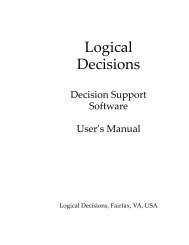AFTER VIOLENCE: 3R, RECONSTRUCTION, RECONCILIATION ...
AFTER VIOLENCE: 3R, RECONSTRUCTION, RECONCILIATION ...
AFTER VIOLENCE: 3R, RECONSTRUCTION, RECONCILIATION ...
Create successful ePaper yourself
Turn your PDF publications into a flip-book with our unique Google optimized e-Paper software.
Submission<br />
Confession Voice&Ear Closure<br />
Truth Amnesty Restitution<br />
Closure Closure Closure<br />
Trauma, Violence<br />
Apology, Restitution<br />
Closure<br />
PERPETRATOR VICTIM<br />
Forgiveness<br />
Closure<br />
The Truth & Reconciliation model is based on three pillars:<br />
[1] Victim-Perpetrator: Forgiveness for Apology/Restitution<br />
[2] Perpetrator-State: Truth in return for Amnesty<br />
[3] State-Victim: Restitution in return for Closure<br />
These three exchange relations are related. The basic<br />
relation is between victim and perpetrator; that relation is the<br />
centerpiece of the whole construction. There is an image of the<br />
happy ending: Victim and perpetrator together undo the harm done,<br />
partly materially (restitution), partly spiritually (forgiveness<br />
in return for apology). Final outcome: closure.<br />
If V and P can manage this alone, fine. This is probably the<br />
most frequently found model in human affairs. As an example, take<br />
an average family. There is love. But there may also be harm in<br />
some or all relations: sexual, psychological, spiritual, economic<br />
and social infidelity; lack of care and concern for children;<br />
physically and verbally violent puberty reactions. In a mature<br />
family this is handled according to pillar [1], with acts of love<br />
as restitution, healing the wounded love relation. The State does<br />
not enter, but possibly some other third party.<br />
But we cannot assume that V and P can handle a relation of<br />
44
















